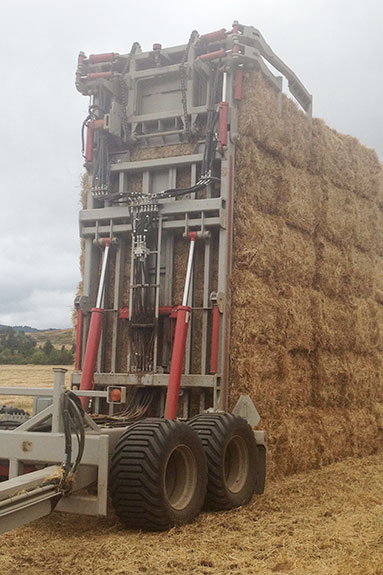Our grass seed goes across the country and world for many uses including pastures, overseeding, lawns and cover crops.
Our seed harvest ended a few weeks ago. We have seed shipments already enroute to Asia and Louisiana and many pounds to go. After the combine thrashes out the seed, the straw is left in the field.
Prior to 2009, we burned a chunk of the straw residue of the field, flail-chopped some and had our fescue custom-baled. With the outlaw of field burning in the majority of the Willamette Valley, we had to come up with an alternative for our annual ryegrass straw.
Now we bale our entire farm. In recent years, it has become economical for us to bale the straw ourselves instead of custom-hire.
The demand for forage straw in the Asian markets hasn’t necessarily changed. Asia likes grass straw for forage primarily for the fiber. There is no real nutritional difference between fescue and annual ryegrass straw; however, the green color of fescue straw is more attractive to the Asian buyers. Different contributing factors have made straw a valuable commodity for farmers.
My friend, Shelly Boshart, is vice-president of international sales and marketing for Bossco Trading LLC. Their family-owned business presses hay and straw in Salem, Oregon.
They ship 100 percent to Asia and are currently working on developing new markets in the Middle East. She explained a few of the factors that can contribute to favorable fescue and annual ryegrass straw prices for farmers. 
After the Wall Street market crash in 2008, the Valley grass seed inventory was at a standstill and prices were at an all-time low, particularly for fescue.
Fescue ground can also make great wheat ground. Grass acres were taken out and wheat was planted. This created a shortage of grass straw, driving prices up.
Like any commodity the price and demand depends on how the alternative product has preformed. If the Oaten Hay in Australia is low-quality, the buyers will prefer that over high-quality straw.
Chinese rice straw had problems with disease and was banned from Japan for six months. Both of these have contributed to price and demand.
As Boshart says, “The fact that the market has sustained those high prices is because the demand is there. This has been driven by many different reasons – and probably a combination of more than I can even come up with.”
I oversee the baling operation on the farm. Two years of baling our own straw is finished. We have plenty of experience harvesting grass seed, and we are slowly gaining experience in harvesting straw. I would like to say the learning curve is evening out, but it’s farming – and the learning curve never stops. FG

- Marie Bowers
- Bashaw Land and Seed Inc.










